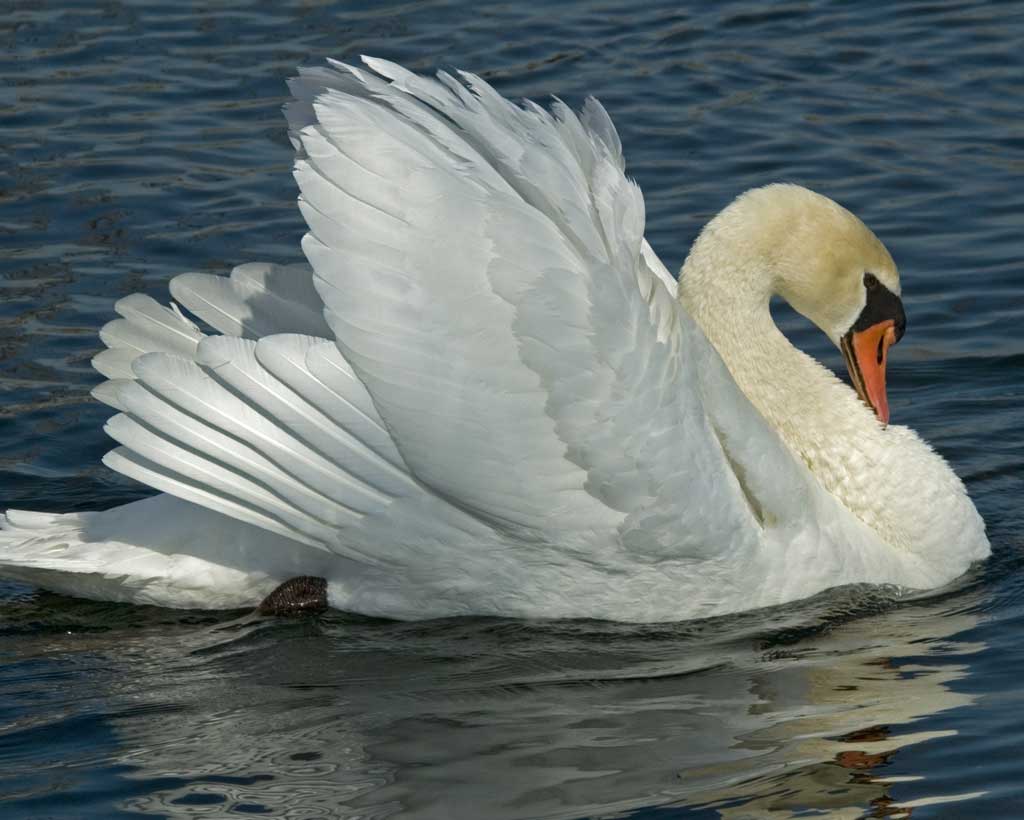Mute swan: Red Data Book of Armenia

Ducks, geese and swans — Anatidae
Status. A casual migrant and a generally rare species. Listed in the IUCN Red List of Threatened Species (ver. 3.1) as Least Concern. According to IUCN criteria categorized as Vulnerable VU B1ab(iii)+2a.
Distribution. The range is spread throughout most of Europe and Scandinavia, Russia, Asia Minor, South Caucasus, Iran, Afghanistan, Northern India and Eastern China.
Distribution in Armenia. Occurs during migrations, occasionally also in winter, in the Lake Sevan basin and on the fish ponds of the Ararat Valley.
Habitats. Water bodies with lush riparian vegetation and open water surface.
Biological traits. Nests are built in hardly accessible reedbeds and made of residues of reeds and other riparian plants. Eggs are light green, 7–9/clutch, size 105–122 mm. The brooding period is 35 days. Hatchlings are looked after by their parents and stay overnight in the nest.
Population size and its trends. Occurs during the autumn and spring migrations in flocks of 5–10 (in winter up to 50–60) individuals. Has always been rare in Armenia.
Major threats. Unknown, possibly, poaching.
Conservation measures. Protected in Sevan National Park. Local communities living in the Lake Sevan basin and personnel of the Armash fish ponds are involved in awareness–raising activities. It is essential to set stringent control over the swan occurrence sites in winter. The Armash fish ponds should be declared an Important Bird Area. It is also important to strengthen anti–poaching activities and to restore the Lake Gilli.
Suggestions
 The Ministry of Environment sent a letter international partners to draw their attention to the real danger of environmental disasters as a result of Azerbaijan's large-scale aggression towards the territory of Armenia
The Ministry of Environment sent a letter international partners to draw their attention to the real danger of environmental disasters as a result of Azerbaijan's large-scale aggression towards the territory of Armenia
 Vicia pisiformis: Red Data Book of Armenia
Vicia pisiformis: Red Data Book of Armenia
 Vavilovia formosa: Red Data Book of Armenia
Vavilovia formosa: Red Data Book of Armenia
 Trigonella capitata: Red Data Book of Armenia
Trigonella capitata: Red Data Book of Armenia
 Trigonella astroides: Red Data Book of Armenia
Trigonella astroides: Red Data Book of Armenia












